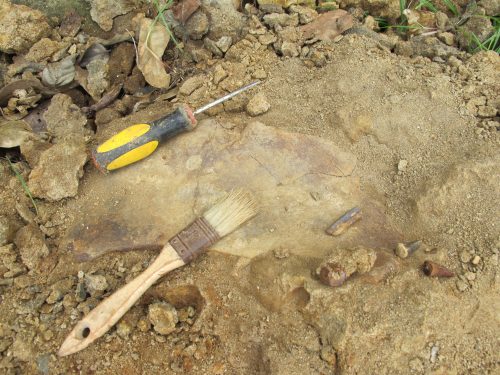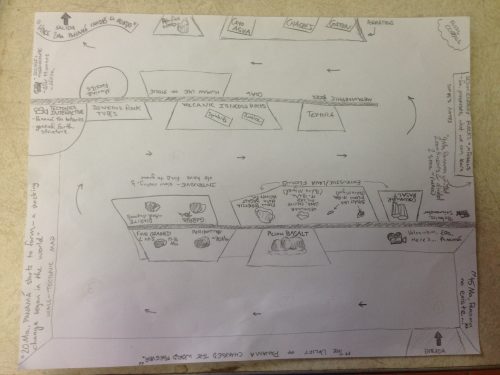
In a previous post, Jeremy told us of some of the many exciting things that have been happening in the field as of late. Lake Alajuela is proven to be not only a very beautiful field site, but fruitful as well; we hope to continue prospecting and discovering there! In this post, however, I want to talk a little bit more about our work outside the field.
We only have about three weeks left in Panama, and there are many things that we still want to get done. Creating a narrative for the BioMuseo is one of our main priorities, and there is still much to do. As promised, today I will give an update on how things are going with our work with the BioMuseo.
Throughout our time here, we have gotten to know the BioMuseo very well. We have visited the museum three times, the first being with the Spring Break group from the University of Florida. The last two times we have visited has been to work toward the creation of the narrative for the guides through the geology section. Here, I will explain what steps we have taken towards our goal and the work still to come.

Our first work-related visit to the BioMuseo was to get a better idea of where the guides were with the content of the geology exhibit, and to get a feel of their geologic knowledge in general. We walked through the exhibit in groups of three or four, each of us walking with two or three of the museum guides. The guides would tell us what they normally told the visitors in certain sections, as well as asking us questions that they had about parts of the exhibit. In this way, we were able to get a feel of the areas we could help with.
After this visit to the museum, we felt it was necessary to go one more time on our own to map out all of the components of the exhibit. In order to provide a useful narrative for the guides, we needed to know the order of all the rocks featured in the exhibit. We took pictures of all of the rocks and took notes on all of the different displays, description, and interactive videos shown. We were surprise at all we had overlooked before; the exhibit is full of useful information.
With the organization and content of all of the exhibit known in detail, and a better idea of the knowledge of geology the guides had, we were able to start working on the narrative. This is the stage we are currently in. We want to make people excited about geology, and are hoping that our work with the guides will help to do so. In addition to the creation of the narrative, we are also in the process of creating a power point for the guides explaining more in detail the geological topics relevant to the closing of the isthmus of Panama. We will be meeting with the guides one more time before we leave to present the narrative to them, as well as the associated powerpoint. It has been a lot of fun working with the guides and on the creation of this narrative. Again, we hope it will benefit both the guides and the museum visitors!
~Sonia~
![[L to R] Sophie, Adam, and Jeremy looking over the map of the BioMuseo exhibit, and discussing the organization of the narrative.](https://www.floridamuseum.ufl.edu/wp-content/uploads/sites/77/2015/04/img_0086-600x450.jpg)
